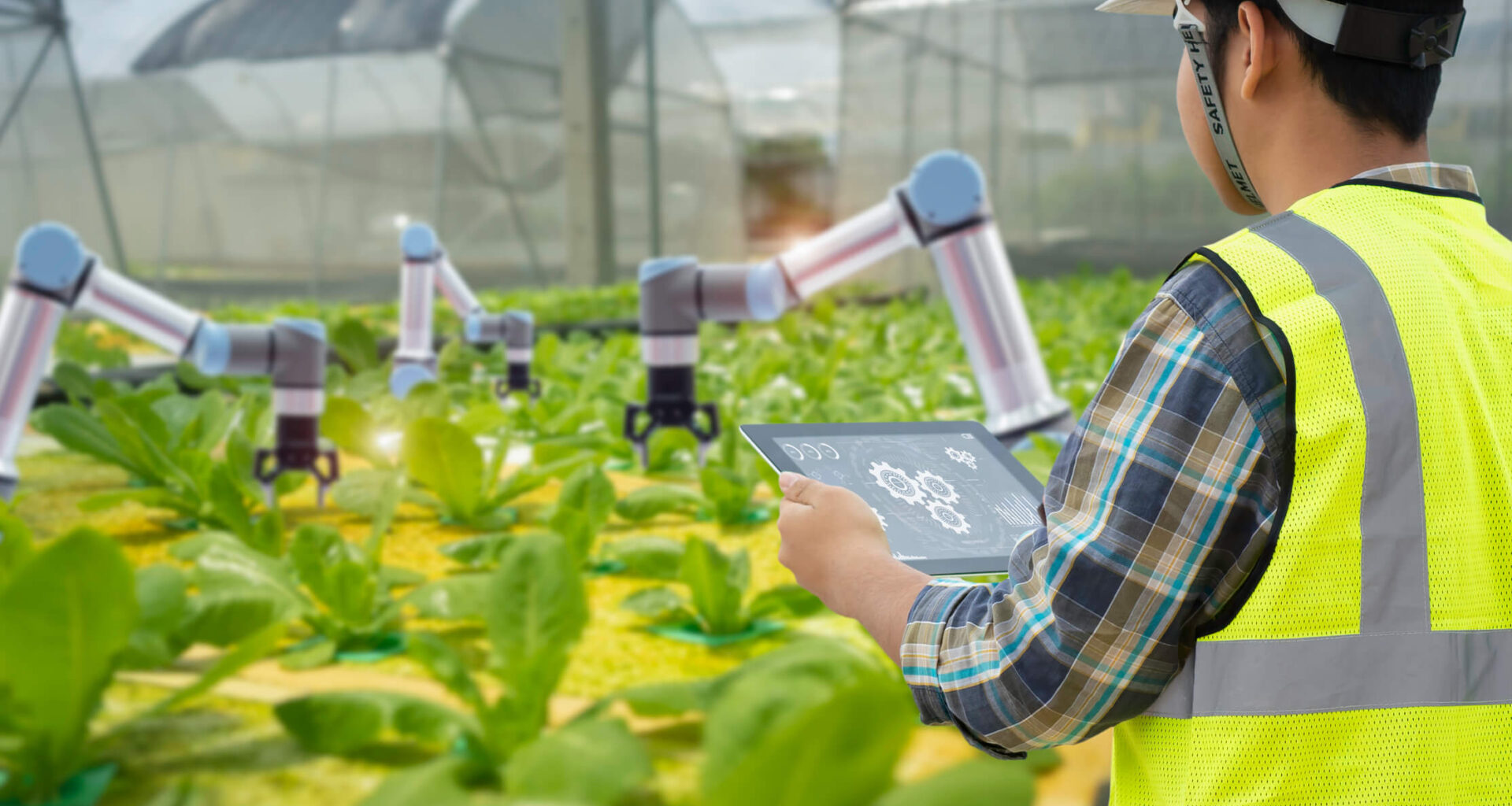Feeding the world sustainably is an increasingly pressing concern with growing populations and a rapidly warming planet. Global populations are expected to surpass 9 billion by 2050, whilst the planet is likely to warm by between 1.5 and 2°c within the same timeframe. Attempts to cultivate food to meet the growing demand whilst minimising the environmental impact of food production are of serious importance, and so technology and food production must be married together to offer new and viable solutions.
The Challenges of Sustainable Food Production
Traditional forms of food production have associated environmental issues around soil degradation, water depletion, deforestation, and excessive methane production – to name but a few. Then factor other issues with wastage, and transportation and the environmental toll it takes on the planet can be quite a heavy one with around a third of greenhouse-gas emissions coming from agriculture.
As such, the push for sustainable technology in food production becomes a point of hope to rally around for a cleaner, greener future. If these innovations were to become widespread, they could make a considerable dent in the emissions that our food production gives off. Revolutionising how we grow, harvest, and distribute our food will be no easy task though and will potentially involve many technologies and solutions across many fields.
What is Vertical Farming?
Vertical farming shifts the established norms of growing in the ground to growing in vertically stacked layers. By using controlled environments that utilise hydroponics and aquaponics and hydroponics, there is no need for soil. Food can therefore be grown indoors, on rooftops, in shipping containers, or even underground, as such, the efficiency and yield can be greatly increased with minimal amount of land used reducing degradation and destruction of natural resources.
With this in mind, the crops grown are also less prone to damage from environmental factors, unaffected by drought, high winds, floods, fires, or pests (which also means less usage of pesticides and other environmentally harmful chemicals). Moreover, their proximity to urban centres reduces transportation emissions and ensures fresh produce year-round, addressing both food security and environmental concerns.
The Benefits of Precision Agriculture
Precision agriculture is informed decision making in farming from data analytics and sensor technology, thus helping be extremely precise and accurate in the inputs that a crop needs. By being able to give exact amounts of water, fertiliser, and pesticides, you dramatically reduce wastage and increase efficiencies alongside real time insights on variable factors (weather, soil health and other environmental factors) so farmers can be proactive in their actions rather than reactive.
This can be achieved via the use of drones monitoring crops to make sure they are at optimal health or employing algorithms to predict when the best time for planting and harvesting would be. This can dramatically enhance productivity alongside reducing excess usage of resources.
Alternative Protein Sources
Long championed by those on plant-based diets and others, alternative protein sources offer a different option to the traditional meat focused diets that use animal products as their source of protein.
Typically, high in land usage and methane production, as well as causing deforestation, a far more efficient approach to agriculture is to find alternative protein sources. However, encouraging mass changes to diet involves cultural shifts and an uphill battle with people’s personal consumption choices, and so, turning to other ways to produce protein to match tastes and dietary requirements whilst being less destructive is a key priority for sustainable food production.
One way of doing this is farming insect protein, which uses less land and water than farming mammals, and is already a practice in small pockets of the globe but pushing it globally may be an issue with cultural perceptions of insects.
Another way is to replicate existing meat proteins using lab-grown stem cells, 3D-printed meat, creating an edible rendering of a meat-like product without actually farming or killing any animals. This involves advanced technology to incubate and cultivate this ‘meat’ and is a cost-prohibitive innovation so far but should it be taken up by more food producers, it could be a viable way forward for alternative protein production.
What Does the Future Hold for Sustainable Food Production?
Sustainable technology undoubtedly is making promising inroads in food production, but with time running short before major global disruption caused by climate change, investment by the private and public sector needs to be considered for these technologies.
Incentivising such investment may be a step forward in order to promote research and development in further tech that helps in this area, but the social and political pitfalls could well be a blocker in such areas. It’s imperative for corporations to integrate sustainability as a fundamental principle, incorporating technologies and strategies aimed at reducing their environmental impact while fulfilling consumer expectations for ethically produced goods.
Equally vital is the role of consumers, who wield significant influence by making educated decisions and endorsing businesses dedicated to sustainability.











